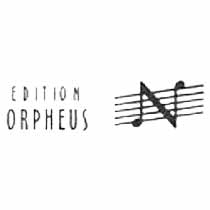Koumendakis - Amor Fati

Δωρεάν μεταφορικά

14 ημέρες δικαίωμα επιστροφής
In Amor Fati (2007), Giorgos Koumendakis approaches Cretan music via an abstractive orchestral script, without using any traditional Greek instruments. The inaugural soloist lines on the violins refer to Cretan kondyliés witnessed in Swiss musicologist Samuel Baud-Bovy’s transcriptions; brief musical phrases, in other words, initially performed on a piece of reed between two consecutive nodes (kóndyloi), and which, later on, also applied to string instrument music (lýra, violin). As each bowing has many turns-embellishments, similarly the composer improvises, evolving around a pentachord, such as the notes that correspond to the “fingers” of the node.
The use of three vibraphones rhythmically accompanied by the strings represents the distinctiveness of the Cretan lute as a par excellence accompanying “percussive” instrument. The string melodies converse with the wind sounds as a Cretan thiabóli or mandoúra – a processed reed in the shape of a recorder – would give space to the performer who is simultaneously the singer to vocalize half, one, one & a half or two fifteen-line rhyming couplets (mandinádes). The patterns stemming out from the composer’s transcriptions of bird chirpings sound on the woodwinds that intermingle with the strings in a Cretan dialogue or improvised rhyming couplets composition (mandinadomahía). The synthesis integrates the dancing dimension, as required by the Greek, traditional triptych “melody-word-motion” in syncopated and “asynchronous” accents which combined with the rhythms of the “percussive” strings realize a slow dance.
The balance between the Dionysian sounds on the winds, on one hand, and the Apollonian strings, on the other, immediately alludes to the Nietzschian ideas that Nikos Kazantzakis adopted, and the composer crowns via the naming of this work: the “tragic” co-existence of spirit and flesh, reason and passion, love of fate and the dual substance of man. The work’s message is undoubtedly auroral: the passion of the cross is followed by the Word’s up-heaval, something annunciated by the resurrectional “bells”-vibraphones, whilst during the last meters of the work, the composition’s vibration remains peaceful and meditative.
Pages: 60
Language: Greek
Publisher: Edition Orpheus

Buy Online

Athens Store
Leof. Siggrou 332

Thessaloniki Store
Filikis Etaireias 23

Patras Store
N.N.R. Athens - Patras 155

B-Stock
| Number of Pages | 60 |
|---|---|
| Publisher | Edition Orpheus |

Warranty
DOA Warranty

Refund
14 days right of refund
Payment
Credit/Debit Card, Paypal,Payment in store,Cash on delivery,Cash on delivery, Bank deposit












































![Πεφάνης - Φευγάλας - Μουσικές Καταγραφές [I]](https://stollas.com/media/catalog/product/9/7/9790691516768.jpg?width=354&height=354&store=en&image-type=small_image)